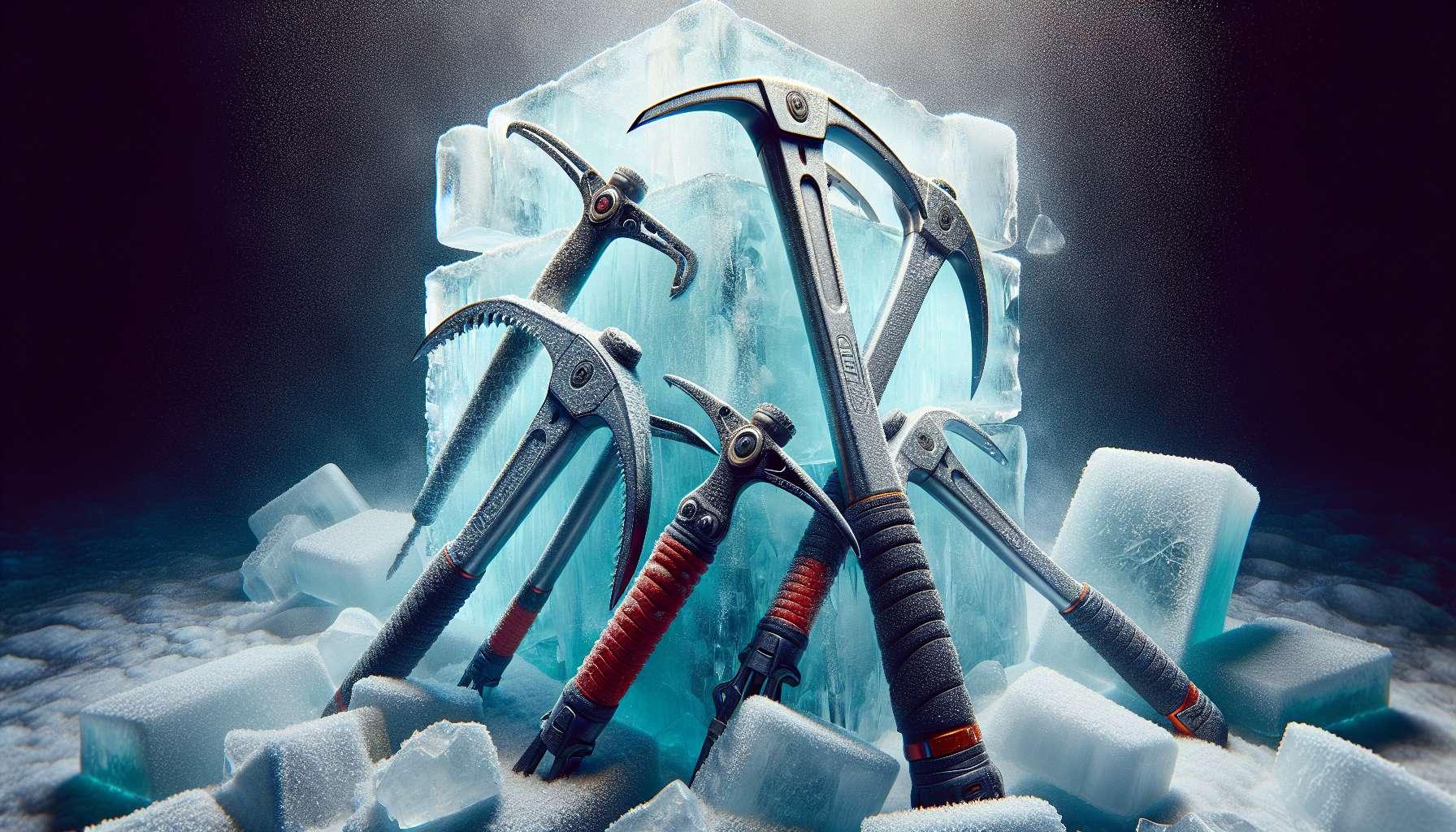The Comprehensive Guide to Ice Axes
Welcome to the ultimate guide to ice axes, indispensable tools for climbers, mountaineers, and ice climbers. Ice axes are not just mere instruments; they are extensions of the climber’s body, aiding in balance, stability, and safety in challenging icy terrains. In this article, we will delve into the history, types, uses, and significance of ice axes, uncovering the secrets behind these essential tools for conquering icy peaks.
The Origin of Ice Axes
The history of ice axes dates back to the early days of mountaineering when climbers needed a reliable tool to navigate glaciers and ice-covered slopes. The first ice axes were simple wooden or metal shafts with a pick at one end and an adze or spike at the other. These rudimentary tools provided climbers with the necessary grip and leverage to ascend steep icy slopes and traverse treacherous crevasses.
Over time, the design and materials used in ice axes evolved, with modern ice axes featuring lightweight yet durable materials such as aluminum alloy and carbon fiber. The addition of ergonomic grips, adjustable shafts, and interchangeable picks has made ice axes versatile and adaptable to various climbing styles and conditions.
Types of Ice Axes
There are several types of ice axes designed for different climbing disciplines and terrains. The two main categories of ice axes are:
1. Mountaineering Ice Axes
Mountaineering ice axes are versatile tools used for general mountaineering, alpine climbing, and glacier travel. These ice axes typically have a straight shaft with a slightly curved pick for self-arresting and chopping steps in snow and ice. The adze on the opposite end is used for cutting steps, digging snow anchors, or chopping ice.

2. Ice Climbing Axes
Ice climbing axes are specialized tools designed for vertical ice climbing and mixed climbing (ice and rock). These ice axes have a more aggressive curve on the pick for better penetration into ice and a hammer or adze for clearing ice and snow. Some ice climbing axes also feature modular designs with interchangeable picks for different ice conditions.

Uses of Ice Axes
Ice axes are essential tools for a wide range of climbing activities, including:
1. Self-Arrest
One of the primary uses of an ice axe is for self-arresting in case of a fall on steep terrain. By properly planting the pick into the snow or ice and using the adze as a brake, climbers can stop themselves from sliding further down the slope.
2. Anchoring
Ice axes are used to build snow anchors, such as T-slots, deadman anchors, or ice screws, to secure climbers and belayers while climbing. The adze or pick of the ice axe can be driven into the snow or ice to create solid anchor points.
3. Ice Climbing
For ice climbing and mixed climbing, ice axes are indispensable tools for ascending vertical ice formations. Climbers use their ice axes to swing and hook into the ice, providing the necessary holds to pull themselves up the wall.
4. Glacier Travel
When traversing glaciers and snowfields, ice axes are used for balance, stability, and route-finding. The spike at the bottom of the ice axe shaft can be planted into the snow to provide additional traction and support on icy terrain.
Choosing the Right Ice Axe
When selecting an ice axe, climbers must consider several factors, including:
1. Length
The length of the ice axe should be proportional to the climber’s height and intended use. For general mountaineering, a longer ice axe provides better stability and reach, while shorter ice axes are more maneuverable for technical ice climbing.
2. Pick Type
The pick of the ice axe can vary in shape, angle, and material, depending on the climbing style and conditions. Tapered picks are ideal for ice climbing, while more robust picks are suitable for mixed climbing and alpine routes.
3. Shaft Material
Modern ice axes are made from lightweight materials such as aluminum, steel, or carbon fiber. Aluminum ice axes are lightweight and durable, while steel ice axes offer superior strength and durability.
4. Grip Design
Ergonomic grip designs with finger rests and hand guards provide better comfort and control when swinging and plunging the ice axe. Some ice axes also feature adjustable grips for customization and comfort.
Expert Opinions
We reached out to renowned mountaineers and ice climbers for their insights on ice axes:
Jon Krakauer, Author of “Into Thin Air”
“An ice axe is not just a tool; it’s a lifeline in the mountains. Choosing the right ice axe can mean the difference between success and failure on challenging climbs.”
Comparative Analysis
When comparing different ice axes on the market, climbers should consider factors such as weight, price, durability, and performance. While lightweight ice axes are ideal for long alpine routes, heavier ice axes offer more durability and strength for demanding ice climbing.
Conclusion
To wrap things up, ice axes are indispensable tools for climbers and mountaineers, providing stability, safety, and confidence in icy terrain. Whether you’re scaling a frozen waterfall or traversing a glacier, having the right ice axe can make all the difference in your climbing experience. Choose wisely, train diligently, and conquer the icy peaks with the power of the ice axe by your side.




